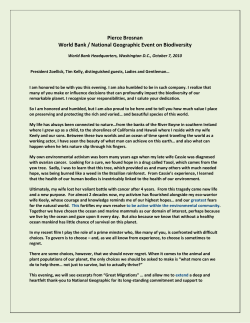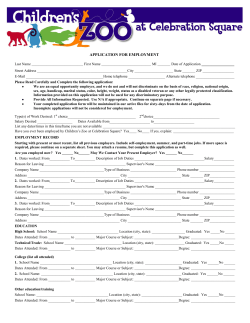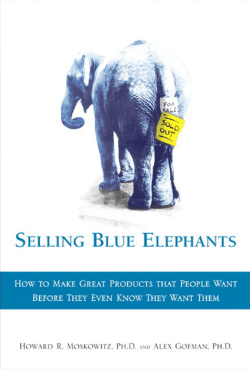
Live hard die young ,
Live hard, die young – how elephants suffer in zoos CAILEY OWEN,WILD IMAGES/RSPCA PHOTOLIBRARY The scale of the problem 4 How zoo elephants are treated 4 Welfare problems 6 Why zoos say they keep elephants 8 What the RSPCA wants 9 RSPCA recommendations 10 Conclusions 11 DAVID BREED/WILD IMAGES/RSPCA PHOTOLIBRARY Herds of African elephants travel on average 12km per day in the wild. 4 1 Elephants in zoos die young. New RSPCA-commissioned research reveals captive elephants in European zoos suffer from a catalogue of inadequate provisions along with poor welfare and early death. The RSPCA has seen no evidence to suggest that European zoos are able to keep elephants satisfactorily long term, and therefore believes they must phase out their elephant populations, with an immediate end to imports and breeding. They must also make immediate, substantial and monitored improvements to welfare standards for elephants currently in their care. The scale of the problem structures compared to wild populations, and contain unrelated individuals. Elephants are Zoo elephants are wild, not domesticated. Over 500 – 48 per weaned and separated from their mothers very cent of the world’s zoo elephant population – are held in Europe. early. The strong, lifelong bonds between females The majority of those in zoos are wild-caught – Asian elephants are frequently broken when they are transported coming mostly from Burma, and African elephants from Zimbabwe. to other facilities or separated as part of their The rest probably came from timber camps or were born in zoos. husbandry. Single elephants are increasingly moved away from their social groups, and mothers How zoo elephants are treated RSPCA-commissioned research has revealed a catalogue of inadequate husbandry provisions for many European are hardly ever transferred with their offspring. ■ Poor diets typically deliver the wrong balance of nutrients in the wrong form. zoo elephants. ■ Enclosures generally lack stimulation and are ■ Elephants are often kept in unnatural social groups. Groups are small, with very different age 1 A review of the welfare of zoo elephants in Europe, Clubb R and Mason G, 2002. typically very small. Even the minimum enclosure sizes recommended by the American Zoo and ANDREW FORSYTH/RSPCA PHOTOLIBRARY Elephant enclosures in European zoos generally lack stimulation. 5 Aquarium Association (AZA) and the European training and obedience – a process that has potentially Association of Zoos and Aquaria (EAZA) are still 60 to severe immediate and long term welfare implications. 100 times smaller than the smallest wild territories. Obedience in these elephants is probably due to conditioning, habituation, fear and learned ■ Some enclosures have hard, poorly drained flooring. helplessness – not the dominance supposed by their handlers. Elephants do attack and even kill their ■ 90 per cent of European zoo elephants have no keepers. There have been at least six deaths caused natural grazing. by elephants in free contact systems in European zoos since 1990 – three in less than three years in the UK. ■ For most elephants the European climate may be too cold and wet – they can spend up to 16 hours ■ Elephants are still trained to perform acts confined indoors in cold weather. derived from circuses in European zoos, such as hind-leg stands. ■ Elephants are the only dangerous wild animals in the ‘Exercise time’ at a UK zoo, 2002. UK, and probably in Europe, regularly cared for by a system involving unrestricted contact with their keepers (hands-on). In 80 per cent of European zoos, elephant handlers try to dominate elephants by psychological means, physical restriction and punishment – a system known as traditional free ankus (the traditional sharp-ended ‘elephant hook’), but may also be subjected to electric cattle prods, ropes and chains. The use of such devices is typically unmonitored and often at the discretion of individual handlers. It is not known how many young zoo elephants are, or have been, ‘broken’ to facilitate ANDREW FORSYTH/RSPCA PHOTOLIBRARY contact. Elephants are usually controlled by an Welfare problems ■ Malnutrition has been reported and can lead to deficiencies in vitamin E, calcium, iron and other nutrients. Intestinal The report identifies a range of welfare problems resulting problems such as enteritis, colic and impaction of the from the conditions and manner in which elephants are kept colon are believed to be more common in zoo than in in European zoos. Although most animals have a greater life expectancy in captivity compared to their wild counterparts, estimates for ■ Breeding rates in zoos are about 10 times slower than those elephants suggest they live longer in the wild than in zoos. in the wild or timber camps. The average zoo female The mean life expectancy of elephants in European zoos is produces one calf in her whole lifetime, compared with six just 15 years for Asians and 16 for Africans – even elephants in the wild. working in Burmese timber camps have a mean life expectancy of 30 years. 6 ■ Low female fertility could be caused by disrupted Individual Asian elephants as old as 79 have been reported reproductive cycles (perhaps due in part to a higher in timber camps, while wild African elephants are estimated incidence of ovarian cysts), excessive body weight (also to live up to the age of 65. In contrast, the oldest recorded linked with cysts), stress or reproductive stress/ ages for zoo elephants are just 56 for Asian elephants and suppression – for example because of the relative 50 years for African. instability of zoo herds. Elephants born in zoos on average die younger than those Zoo females have short reproductive lives – at the most a imported from the wild. Stillbirth, infanticide and calf-rejection are collectively responsible for around 74 per cent of the deaths of infant elephants born in zoos. quarter of that in the wild. Zoo-kept Asians breed very young – at 15 years on average, compared with 20-25 in timber camps and 18-20 in the wild. ■ ■ Data shows over 60 per cent of zoo elephants that survive beyond infancy, die through illness – including circulatory When they start breeding earlier, they stop breeding earlier problems, foot problems and herpes. Tuberculosis is also a too. Their longevity is also affected: females that breed potential threat. before 12 years old die earlier than other animals. Female Asian zoo elephants in one study were 31 to 72 per cent heavier than their wild counterparts – probably as a result of high-energy diets and lack of exercise. About 30 per cent of zoo males in one study were infertile due to low sperm quality. About 75 per cent of those tested have low sperm volumes. Behavioural problems (such ■ ■ The arthritis that appears relatively common in zoo elephants as low libido) may also play a role. Possible causes are may be the result of excessive body weight, lack of exercise, stress, dominance-based training – bulls that are considered inadequate flooring, damp, unhygienic conditions, being subordinate to keepers or females may have lower sperm trained to perform certain acts (such as hind-leg stands) and quality and testosterone levels – excessive body weight and general stress. specific nutrient deficiencies, such as zinc. Being made to perform certain acts repeatedly can lead to When successful, breeding in zoos may condemn more other health problems, such as hernias. animals to poor living conditions because of limited space. ANDREW FORSYTH/RSPCA PHOTOLIBRARY ■ wild elephants. ■ Unnaturally structured, small social groups – so common in where the animal stands and moves its body in figure-of- European zoos – have severe potential welfare consequences. eight patterns. Grouping unrelated or mixing unfamiliar They may affect the acquisition of learned skills, such as animals, inadequate enclosure sizes and designs, and lack of aspects of sexual behaviour and maternal care, and also limit stimulation are all possible causes. behavioural stimulation. They may prevent females forming the strong bonds they do in the wild and possibly lead to aggression. ■ The common movement between facilities (an increasing trend affecting 30 per cent of animals) has potentially serious welfare consequences for both the moved animal and its remaining group members. Such movements can lead to aggression as the group readjusts its social hierarchies. Captive-born animals are taken from their mothers when they are about three. Calves this young would still be suckling in the wild – taking them from their stress, behavioural abnormalities, immune functioning and reproduction. ■ Data shows about 40 per cent of zoo elephants perform stereotypic behaviours. An example is persistent ‘weaving’, ANDREW FORSYTH/RSPCA PHOTOLIBRARY mothers at this age has severe potential implications for Why zoos say they keep elephants elephant conservation have been identified by the IUCN. They include the establishment of more protected areas, enforcing Zoos claim keeping elephants supports conservation, education and research. But do these putative benefits really outweigh the welfare costs? anti-poaching legislation and various strategies to reduce conflict with humans – but not captive breeding. Education The claimed educational role has never been adequately Conservation Zoo elephants don’t breed well and die early. This means more quantified and as such it is hard to see what educational benefit elephants in zoos can offer. wild-caught elephants have to be imported. The World Wide Fund for Nature (WWF) and the African Elephant Specialist Research Group of the International Union for Conservation of Nature Though research has been carried out on zoo elephants, the and Natural Resources (IUCN) do not think captive breeding same research could be done with elephants in other types of contributes significantly to elephant conservation. Priorities in facility or in the wild. ANDREW FORSYTH/RSPCA PHOTOLIBRARY 8 Circus style act being performed at a UK zoo, 2002. What the RSPCA wants ■ ■ Zoos in Europe that still keep elephants must phase them out. No more elephants must be imported into Europe. Given the RSPCA’s current knowledge of elephant The RSPCA believes there is no justification convinced that any of these zoos meet elephants’ under the Convention on International Trade welfare requirements overall. Furthermore, the in Endangered Species of Wild Fauna and conditions under which elephants live in the wild Flora (CITES) for their continued importation (detailed in Clubb and Mason, and compared with welfare in European zoos, the RSPCA remains to be captive conditions) are such that the RSPCA to zoos. CITES states that importation of Asian remains doubtful that the welfare requirements 2 and most African elephants is only allowed for of elephants could be met by existing European ‘conservation, education and research’ to facilities zoos. Nevertheless, zoos must make every effort that are ‘suitably equipped to house and care for to provide the highest quality of life for their them’. And importation of African elephants from remaining elephants for the rest of their lives, in 3 Botswana, Namibia and Zimbabwe must be ‘to accordance with the recommendations below, appropriate and acceptable destinations’, as and undertake not to replace them. designated by the appropriate Scientific Authority. ■ No more elephants must be bred in Europe. In the future zoos should refocus their resources on wild elephant welfare. Ultimately the RSPCA believes the costs of There are significant welfare costs to the housing elephants properly in zoos in Europe are animals involved, which are not outweighed by prohibitive, and that the money would be any real benefits. Captive breeding brings better spent protecting elephants in the wild additional welfare costs as well as practical from conflict with humans. For example, problems. The 50 per cent of progeny that are keeping elephants in a western zoo is male are also particularly difficult to house well estimated to be 50 times more expensive and safely. than conserving them in the wild. MARK HAMBLIN/RSPCA PHOTOLIBRARY ■ 2 CITES Appendix 1 elephants. 3 CITES Appendix 11 elephants. 9 indicate an underlying severe welfare concern that must RSPCA recommendations be addressed at source. Until elephants are phased out from European zoos, drastic ■ Enrichments – such as foraging devices, pools, improvements must be made to the facilities provided in line rubbing/scratching posts and mud wallows – should be with the following welfare recommendations: added to indoor and outdoor enclosures. They should be upgraded and maintained. ■ Traditional free contact must be phased out. ■ The welfare benefits to elephants of traditional free contact 4 Elephants should not be chained except for extremely brief have not been proven superior to those in protected contact , periods where absolutely necessary, for example for health and traditional free contact is a much more dangerous system reasons. But the need, for example, to chain elephants in for keepers. Furthermore, traditional free contact is based on a order to treat their feet should indicate zoos’ failure to theory of dominance that is difficult to support scientifically. It provide proper conditions and husbandry. can only be phased out alongside a dramatic improvement in ■ facilities, and a protected contact system adopted instead. 10 Heated rubber flooring that drains easily should be provided in all indoor enclosures. Only skilled handlers should be used, who have a genuine appreciation of the psychological and physical needs of ■ Elephants must not be housed indoors for more than a few elephants, an understanding of their natural lifestyles and a hours a day, unless there is sufficient space indoors for them deep concern for their welfare. to spend longer. Elephants must be able to have a good quality of life whatever the weather. ■ Minimum, substantial welfare ■ recommendations must be implemented. Indoor space allowances should be at least equivalent to the AZA and EAZA minimum requirements for outdoor space. The RSPCA believes there is sufficient evidence to suggest that improvements in some aspects of husbandry are likely to ■ The RSPCA believes AZA and EAZA recommendations improve zoo elephant welfare to some degree. The following are inadequate and outdoor space allowances must be minimum husbandry measures must be implemented. significantly increased. 5 ■ Young males should stay with their mothers until the natural ■ Diets must meet the recommendations by de Regt et al . ■ All forms of breaking must be discontinued . ■ Fear, pain and other aversive stimuli, particularly in free age of dispersal in the wild (10 to 15 years old), unless 6 problems of aggression arise within the group. ■ Young females should stay with their mothers for life. ■ No animal should be housed singly, especially females. contact, must not be used to manage elephants. Only keepers of appropriate attitude (see above) should be employed. ■ Existing females that are pregnant should not be separated from the herd for calving. Every possible effort should be made to monitor zoo elephants’ welfare humanely and scientifically. The implementation of these ■ Existing females that are pregnant should not be chained recommendations should be monitored so any necessary for calving. Attacks by females on new-born calves may improvements can be made. 4 5 Protected contact is a management system whereby elephants and keepers do not Appendix 11 in A review of the welfare of zoo elephants in Europe, Clubb R and share the same restricted space, and where training is based on positive Mason G, 2002. reinforcement. The use of ankuses and electric prods is completely disallowed. 6 Chapter 6, Clubb and Mason. Conclusions The RSPCA believes, along with Clubb and Mason, that: ‘overall… zoo elephants generally experience poor welfare, stemming from stress and/or poor physical health’. The supposed benefits of conservation, education and research do not outweigh the costs to these animals, which too frequently live shortened lives in unsuitable conditions, and are often subjected to inhumane treatment by handlers. 11 The RSPCA is not currently convinced that European zoos will be able to reach the high levels of welfare required to keep elephants long term and believes they should immediately phase out their keeping of elephants through ceasing importation and breeding programmes, while making demonstrable improvements to the welfare of their existing elephants. CAILEY OWEN/WILD IMAGES/RSPCA PHOTOLIBRARY More information If you want more detailed information you can view the RSPCA report A Review of the Welfare of Elephants in Europe on the RSPCA website at www.rspca.org.uk. Wilberforce Way Southwater, Horsham West Sussex RH13 9RS Tel: 0870 010 1181 www.rspca.org.uk Registered charity no. 219099 We receive no government funding Z06 10.02 COVER PHOTO: CAILEY OWEN,WILD IMAGES/RSPCA PHOTOLIBRARY
© Copyright 2025











